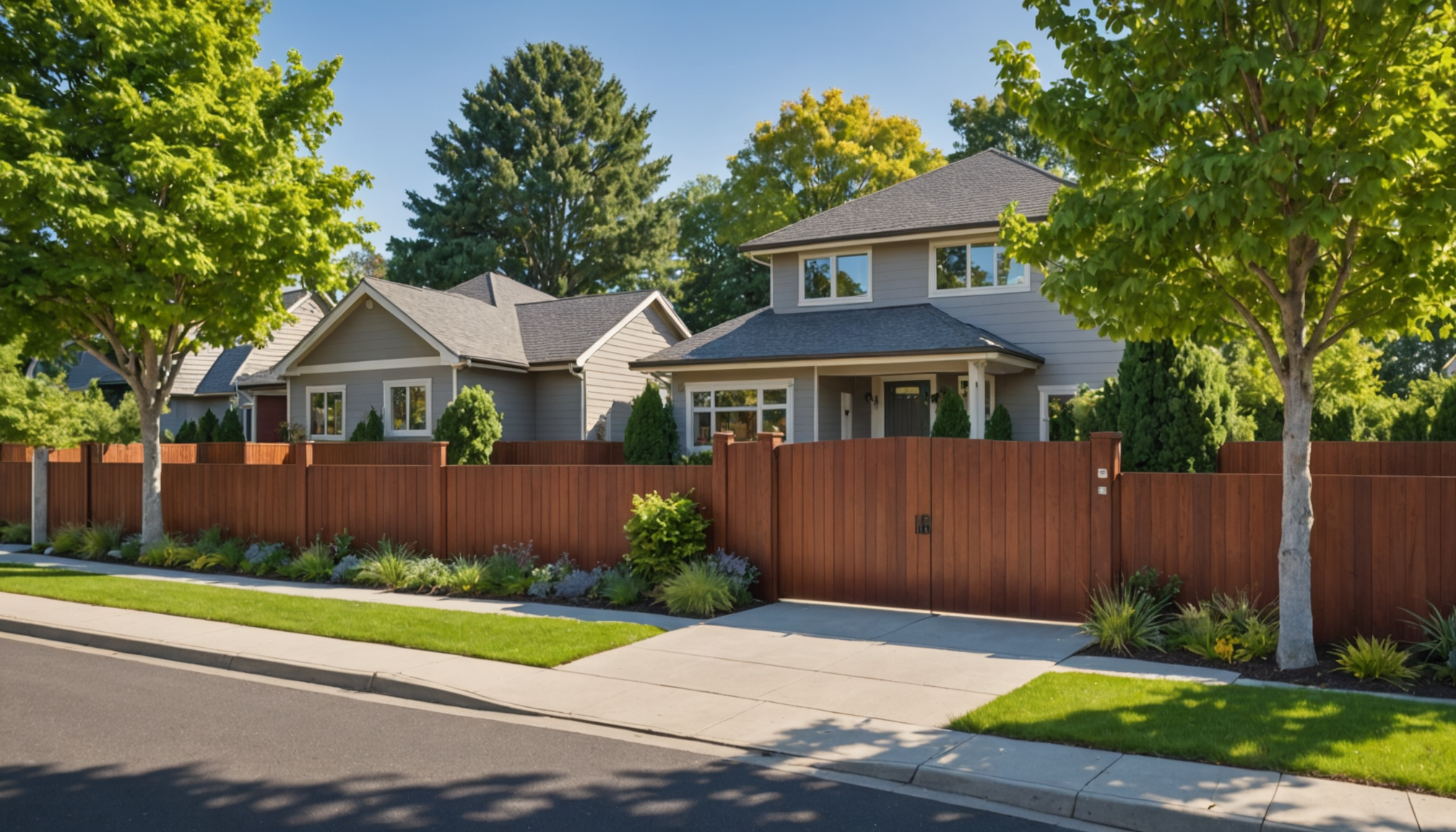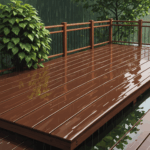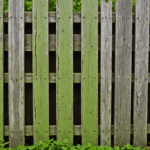When embarking on the journey to choose the best fence for your property, the first and most crucial step is to thoroughly assess your needs. This initial phase is fundamental as it sets the foundation for every subsequent decision, ensuring that your investment aligns with both your personal preferences and functional requirements.
Begin by defining the primary purpose of your fence. Are you seeking privacy from neighboring properties, a secure enclosure for children and pets, or an aesthetic enhancement to boost curb appeal? Clarifying these objectives will guide you in narrowing down options and lead to a more fitting choice.
Consider the landscape and environment around your property. The geographical location, local climate, and terrain can significantly influence the type of fence most suited to your needs. For instance, areas prone to high winds may benefit from open-design fences that allow air flow, while moister climates might necessitate materials resistant to rot or rust.
Another factor to consider is the scale of your project. Larger properties may require long stretches of fencing, which can impact cost and material choice, while smaller areas might allow for more customization without incurring prohibitive expenses. Additionally, think about the lifespan you expect from your fencing investment. Is this a temporary solution or a long-term addition to your property’s infrastructure?
Lastly, reflect on any specific design elements that you might want your fence to encompass. Modern homeowners often seek to blend functionality with style, incorporating elements that enhance the overall aesthetic of their home as well as serve a practical purpose. This might involve considering factors such as color, texture, and decorative elements that match your home’s architecture.
By methodically assessing your needs, you arm yourself with the necessary knowledge to make informed decisions. This proactive approach minimizes the risk of unforeseen challenges and ensures the selection of a fence that not only meets but exceeds your expectations.
exploring material options
When choosing a fence, the material is a critical component that influences durability, appearance, and maintenance requirements. To make an informed decision, it is essential to explore the different material options available and understand their respective benefits and limitations.
1. Wood
– Pros: Wood is a classic choice that offers natural beauty and warmth. It is customizable, allowing you to shape and paint or stain the fence to fit your desired style. Wood can also offer privacy and has a traditional appeal.
– Cons: It requires regular maintenance, such as painting or staining, to protect it from rot, insects, and weather damage. Over time, wood may warp or crack, especially in areas with harsh climates.
2. Vinyl
– Pros: Vinyl is a durable, low-maintenance option that does not require painting or staining. It resists pests, rot, and fading, making it good for areas with extreme weather conditions. Vinyl is easy to clean and comes in a variety of styles and colors.
– Cons: Although initially more expensive than wood, the low maintenance cost can make it cost-effective in the long run. Vinyl may also crack under significant impact or in very cold conditions.
3. Metal
– Pros: Metal fencing, including options like aluminum, steel, or wrought iron, is known for its strength and security. Metal fences are great for security purposes and often feature intricate designs that can add to the aesthetic of a property.
– Cons: They tend to be on the more expensive side and may require periodic maintenance to prevent rust, particularly wrought iron. Some metal options can also be less private, though they can be paired with hedges or other landscaping for increased privacy.
4. Composite
– Pros: Composite fences are made from a mixture of wood fibers and plastic, offering a look similar to wood but with enhanced durability and reduced maintenance needs. They are resistant to insects and decay and do not splinter.
– Cons: This option can be more expensive upfront. The color and style options may be more limited compared to vinyl or wood.
5. Chain Link
– Pros: Often used for security purposes, chain link fencing is cost-effective and durable. It requires minimal maintenance and is good for defining boundaries without obstructing the view or restricting airflow.
– Cons: Provides little privacy unless slats or screens are added. It is generally not considered the most attractive fencing type, which can affect curb appeal.
6. Bamboo
– Pros: As a sustainable and eco-friendly option, bamboo provides a natural look similar to wood. It grows quickly, making it a renewable resource, and can handle a variety of climates.
– Cons: Bamboo fencing may require treatment to resist pests and moisture. It is less durable than other materials like vinyl or metal and might not hold up as well under exceptional weather conditions.
As you contemplate these material options, keep in mind factors like your property’s specific needs, your regional climate, and your personal aesthetic preferences. Balancing these considerations will help guide you to choose a material that aligns with both your functional requirements and your desired look.
considering maintenance requirements
Once you’ve explored the variety of materials available, it’s crucial to think about how much time and effort you’re willing to invest in maintenance. This is a key aspect because it impacts the fence’s longevity and appearance, and it often varies significantly between different materials.
Wood fences are notably high-maintenance. If you choose wood for its aesthetic charm and natural look, be prepared for regular upkeep. This includes periodic treatments such as painting or staining to protect the wood from moisture, insects, and sun damage. Without proper care, wood can succumb to rot, warping, or splitting, especially in harsher climates. Routine inspections and maintenance are necessary to fix issues like loose boards or rusted nails, ensuring that the fence remains sturdy and attractive.
On the other end of the spectrum, vinyl fencing represents a low-maintenance alternative. Its resilience against weathering, pests, and rot minimizes the need for frequent interventions. Vinyl doesn’t require painting or staining, and cleaning it typically involves a quick spray with a garden hose or a soapy water wash for tougher grime. However, it’s important to watch for any potential cracks which, although rare, can occur in extremely cold weather.
Metal fences, including those made from aluminum or wrought iron, offer a middle ground in terms of maintenance. While these fences score high in durability and strength, they can rust, particularly if the finish is damaged. Maintaining a metal fence often requires periodic inspections for rust, which needs to be removed, followed by touch-ups to the surface paint or coating to prevent further corrosion. This effort preserves both the structural integrity and the aesthetic quality of the fence over time.
Composite fences, made from a blend of wood and plastic, offer low-maintenance perks similar to vinyl. They do not need painting or staining and are resistant to insects and decay. However, cleaning them every so often helps maintain their appearance and prevents any mold buildup. Since they don’t warp like traditional wood, they require less frequent inspections, saving time and effort.
For a chain link fence, maintenance is relatively minimal, but it’s useful to conduct occasional checks for rust or damage in the metal links, particularly if the fence is exposed to harsh weather conditions. Repairs might include replacing mesh sections or straightening posts.
Bamboo fencing requires specific attention as its organic composition makes it susceptible to weathering and insect infestation unless treated. Applying a clear sealant or UV-resistant finish helps to extend its lifespan. Regularly inspect bamboo fences for any signs of damage, and replace any sections that begin to deteriorate.
Choosing a fence with an understanding of its maintenance requirements can significantly enhance your satisfaction with the investment. Whether you are inclined towards a material demanding more engagement like wood, or you prefer a less involved solution like vinyl or composite, balancing maintenance with your lifestyle and aesthetic goals is key to ensuring that your fence remains a long-lasting and appealing feature of your property.
understanding local regulations
Before you install any type of fence, it’s essential to consult local regulations to ensure that your project adheres to legal requirements. One of the most crucial reasons to pay attention to these regulations is to avoid any potential legal issues or fines that might arise from non-compliance. Municipalities, homeowners associations (HOAs), and neighborhood covenants might have specific guidelines regarding the type, height, and placement of fences on residential properties.
Start by checking with your local zoning office to understand the specific zoning laws relevant to fences in your area. These laws may dictate the maximum and minimum heights for residential fences, which could vary depending on whether it’s at the front, side, or back of your property. Some areas require permits for fence construction, so it’s a good idea to determine whether you need one before breaking ground. Acquiring a permit might involve submitting detailed design plans and specifications, ensuring your proposed fence meets all municipal criteria.
In addition to height restrictions, there might be rules about the types of materials you can use. Some neighborhoods might restrict the use of certain materials for aesthetic purposes, maintaining a uniform look within the community. Make sure to review any covenants, conditions, and restrictions (CC&Rs) that your homeowners association may impose. These documents can provide specific insights into acceptable materials, colors, and styles that conform to the community’s standards.
Another critical aspect is to clearly delineate property lines to avoid disputes with neighbors. A survey of your property might be necessary to confirm exact boundaries and ensure that the fence is installed entirely within your property limits. Overstepping these boundaries, even inadvertently, can lead to complications and may require you to adjust or even remove the fence after installation.
Furthermore, it’s wise to consider any utility lines that may be present underground. Most localities offer marking services that will identify these lines to prevent any damage during digging. Neglecting this step can pose safety risks and result in costly repairs.
Lastly, consider the impact of your fence on the surrounding environment and its integration with the neighborhood’s character. Some regulations focus on preserving visibility for traffic or ensuring that fences do not obstruct neighboring views. Engaging in open discussion with neighbors before commencing with the installation can foster goodwill and preempt any potential disputes.
Understanding local regulations not only safeguards you from legal repercussions but also helps to create a harmonious neighborhood atmosphere. By adhering to these guidelines, you ensure that your fence benefits not just your property, but aligns seamlessly with community standards and expectations.
calculating costs and budgeting
Delving into the financial aspects of your fencing project is an essential step to ensure that your endeavor remains within your financial reach. When calculating the costs associated with a new fence, several key components need to be factored into your budget to avoid unexpected expenses.
Begin by identifying the overall size of the area you need to fence. The length and height of the fence will significantly impact the cost, as material expenses are generally calculated per linear foot. Multiply the fencing perimeter by the estimated cost per foot to establish a base cost. Remember that taller fences often require more material and labor, driving up expenses.
The selection of material is another major cost determinant. While options like chain link are typically more economical, high-end materials like wrought iron or composite tend to be more expensive. Consider not only the initial cost but also the long-term value that different materials provide. Though wood may appear as a cheaper option at first glance, the ongoing maintenance expenses can add up over time, potentially making a material like vinyl, which has less upkeep, more cost-efficient in the long run.
Labor costs constitute another significant portion of the budget. Unless you’re tackling the project as a DIY endeavor, hiring a professional is advisable for ensuring quality and durability. Get multiple quotes from reputable contractors in your area to compare pricing. The complexity of the installation—such as dealing with sloped land or removing existing fencing—can affect these costs. It’s wise to account for contingencies by setting aside an additional 10-15% over your estimated budget for any unexpected issues or changes in scope.
Permits and surveys are often required prior to installation, and these can also carry fees that need to be budgeted. Furthermore, if you require specific treatments for your fence, such as weatherproofing or UV protection for wooden or bamboo structures, include these in your financial plan.
Consider incorporating additional features, like gates or decorative elements, which typically involve extra costs. Moreover, if privacy is a concern, additional expenditures may be necessary, such as latticework or slats, particularly for chain link fences.
Finally, take into account potential maintenance costs, which can add to your total investment over the fence’s lifespan. Whether it’s sealing a wooden fence, replacing sections of a vinyl fence, or periodically repainting a metal fence, these ongoing tasks need to be financially planned.
By carefully evaluating these factors, you can create a more accurate budget that aligns with your financial capabilities, ensuring that your fencing project not only meets your practical needs and aesthetic preferences but does so without causing financial strain. This strategic approach ensures a smooth process from start to finish, leading to a successful installation that enhances your property’s value and appeal.
In conclusion, selecting the best fence for your property requires a balanced consideration of various factors including your personal needs, material options, maintenance, local norms, and budget. By thoughtfully evaluating these components, you can make informed decisions that will result in a fence that not only fulfills its intended purpose but complements and enhances your property’s overall appeal and functionality.


